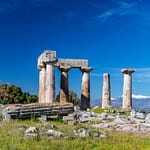TRAVEL AROUND
USA
The USA is a vibrant and diverse destination in North America, drawing millions of travelers each year. Whether you’re a backpacker, couple, solo adventurer, or seeking luxury, the United States has something tailor-made for everyone.
From winding highways that stretch across stunning landscapes to the nonstop energy of bustling cities, the USA offers a rich variety of experiences. Picture epic festivals, charming small towns, mouthwatering comfort food, relaxing retreats, and thrilling theme park adventures. If you’re looking for outdoor wonder, the national parks provide a serene escape, while Disney’s magic adds a touch of whimsy. There’s truly something for every interest and style.
Planning your first journey to the USA? This guide will help navigate everything you need to know: from travel facts and ideal times to visit, to the best destinations and travel tips. We’ll also cover travel costs, essentials, and practical advice to ensure you’re fully prepared for an unforgettable adventure.
Basic resources & travel tips
If you’re planning your first trip, check out our top travel tips to help you get started. We’ve also included some handy resources to make your visit easier and more enjoyable.
Top Destinations in USA

Denver

San Francisco

Miami

Las Vegas

Washington D.C.

Los Angeles
Smart Travel Tips & Costs for Visiting USA
The United States, a vast country brimming with diverse landscapes and dynamic cities, offers travelers a spectrum of experiences—from the neon buzz of Las Vegas to the serene beauty of the Grand Canyon. However, navigating both its expansive geography and varying costs requires some thoughtful planning. Here’s a nuanced guide to help you traverse the States seamlessly while keeping an eye on your budget.
Best Time to Visit the USA
Spring (March-May): Mild weather, great for outdoor activities and festivals. Best for cities like Washington, D.C., New York, and national parks.
Summer (June-August): Hot in many places, ideal for beaches and outdoor adventures, but crowded. Perfect for spots like Florida, California, and national parks.
Fall (September-November): Cool weather and stunning fall foliage, especially in New England. Best for hiking and wine country in places like Napa Valley.
Winter (December-February): Cold and snowy, perfect for skiing and winter sports. Warm destinations like Florida are also great, along with holiday events in cities like NYC.
For mild weather and fewer crowds, go in Spring or Fall. For beach vacations or winter sports, try Summer or Winter.
Travel Tips & Costs
Flights and Transportation
Flights:
Given the size of the USA, flying is often the quickest way to travel between cities. Flights can vary widely in price, depending on the time of year, location, and how far ahead you book. For savvy travelers, booking 6–8 weeks in advance is usually ideal. A good rule of thumb: the earlier, the cheaper.
Domestic Travel:
While flying is the most common, the US has a host of other transportation options:
- Domestic Flights: Airlines like Southwest, American Airlines, and Delta offer affordable tickets, especially if you book early. Budget airlines like Spirit and Frontier can be cheaper but have more fees.
- Trains: Amtrak offers a scenic (albeit slower) alternative for cross-country travel. A nostalgic choice for those who like to watch the landscape unfold.
- Buses: Greyhound and Megabus are both economical and practical for those willing to trade speed for cost-efficiency.
- Car Rentals: Renting a car can be a good option for road trips or exploring national parks. Prices vary but typically range from $30 to $60 per day, with added costs for gas and insurance.
Accommodation
Where you rest your head at night will likely be one of your largest expenses, but the US offers accommodations for all budgets:
- Budget Stays: If you’re looking to keep costs low, motels, hostels, and Airbnb rooms will serve you well. Rates generally range from $30–$100 per night.
- Mid-range Comfort: Think of chains like Holiday Inn or Hampton Inn, with rates typically between $100–$200 per night.
- Luxury: For those wanting to indulge, upscale hotels in major cities or iconic locations like New York, San Francisco, or Miami can easily cost $200–$500+ per night.
Food and Dining
America’s culinary scene is as diverse as its population. Whether you’re indulging in a gourmet meal or grabbing a quick bite, the range of dining options suits all tastes and budgets:
- Street Food/Fast Casual: Think tacos, hot dogs, and pizza slices—generally priced between $5–$15.
- Casual Dining: Mid-range restaurants serve up hearty meals for about $15–$30 per dish.
- Fine Dining: For a refined experience, especially in major cities, you’ll find gourmet restaurants where the bill per person can easily surpass $50.
Attractions and Entertainment
Whether you’re marveling at the exhibits in a world-class museum or seeking thrills at a theme park, entertainment options abound:
- Museums and National Parks: Many museums in the US offer free admission or charge a small fee (around $10–$30). National parks often charge an entrance fee of $20–$35, but passes like the “America the Beautiful” pass (which costs around $80) cover most national parks for a year.
- Urban Exploration: City tours, Broadway shows, or entertainment at places like Disney World or Universal Studios can cost between $50–$150 per ticket, depending on the attraction.
- Free Alternatives: Parks, outdoor festivals, and some art galleries provide ample opportunities to experience the culture without breaking the bank.
Tipping Culture
While tipping is not compulsory, it’s an ingrained part of American culture, especially in the service industry. To help you navigate the social norms:
- Restaurants: A 15–20% tip is standard.
- Taxis: Typically 10–15% of the fare.
- Hotels: Leave $1–$2 per night for housekeeping.
- Tour Guides: $5–$10 per person for a guided experience.
Currency & Payment
- Currency: The US Dollar (USD) is the currency used. Credit and debit cards are widely accepted, but it’s always a good idea to have a little cash on hand for tips or smaller purchases.
- ATMs: There are plenty of ATMs, but fees for using foreign cards may apply, so check with your bank before you travel.
Health and Travel Insurance
- Travel Insurance: It’s recommended to have health and travel insurance, especially in the US, where medical expenses can be very high.
- Health Care: If you don’t have insurance, be prepared for potentially expensive medical bills, especially in emergencies.
Safety and Customs
- General Safety: The USA is generally safe for tourists, but it’s important to stay aware of your surroundings, especially in crowded areas. Always secure your belongings.
- Emergency Numbers: Dial 911 for police, fire, or medical emergencies.
Other Tips
- Time Zones: The USA spans multiple time zones, so be mindful of this when booking flights or planning events.
- Cultural Diversity: The US is a melting pot with diverse cultures. It’s important to respect local customs and traditions, which can vary depending on where you are.
- Language: English is the primary language spoken, but in areas with large Spanish-speaking populations, you’ll also hear Spanish.
Cost Summary
To help you estimate your daily travel budget:
- Budget Traveler: $50–$100 per day
- Mid-range Traveler: $100–$250 per day
- Luxury Traveler: $250+ per day
Note: Prices will vary by region, with major cities and tourist hotspots generally costing more.
Final Word: Travel Smart, Travel Wise
From the urban pulse of New York City to the natural wonders of the Grand Canyon, a trip across the United States offers unmatched diversity. Whether you’re traveling on a shoestring budget or indulging in luxury, the key to a memorable experience lies in smart planning and understanding the cost of each adventure. Are there any specific destinations you’re keen on, or particular experiences you’d like more detailed recommendations on? Let me know!
Safety standards in USA
In the U.S., safety standards are regulated by various agencies to protect public well-being:
Workplace Safety – Regulated by OSHA, ensuring safe working conditions and equipment.
Road Safety – Managed by FMCSA, enforcing vehicle safety, speed limits, and DUI laws.
Building & Fire Safety – Local building codes and NFPA standards for safe construction and fire prevention.
Food & Drug Safety – Overseen by the FDA to ensure food handling and medical products are safe.
Air & Water Quality – EPA sets limits on pollutants to protect air and water.
Consumer Product Safety – CPSC ensures products like toys and appliances meet safety standards.
Healthcare Safety – CMS and FDA regulate healthcare facilities and medical devices.
Transportation Safety – FAA, FRA, and Coast Guard ensure safe air, rail, and maritime travel.
These agencies work together to enforce strict standards to protect people across all industries.



